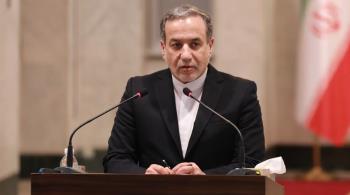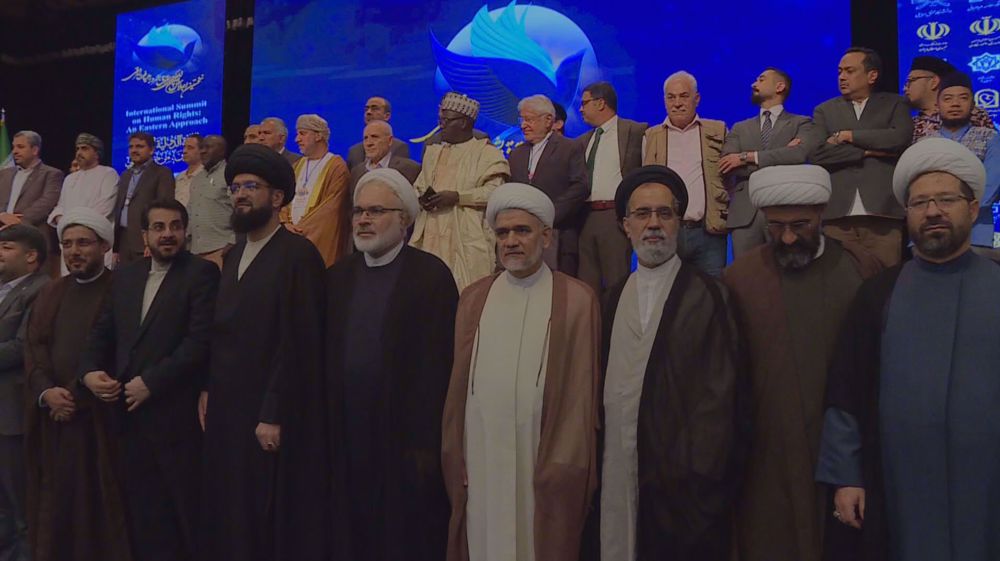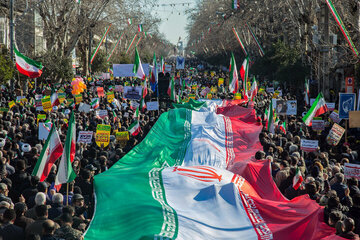Alwaght- The Shiite Muslims from across the world are moving towards the holy city of Karbala in Iraq to mark Arba'een. Occurring forty days after the Day of Ashura, the Arba’een (forty in Arabic) commemorates fortieth day of the martyrdom of Imam Husayn ibn Ali, the grandson of Prophet Muhammad.
Arba’een congregation represents the cultural capacities and potentials of this geocultural ground. In other words, this international event shows the depth of the cultural bonds on which the Shiite politico-military network is based in West Asia region. This regional network is of features that make it distinct from the rival likes. This distinction is perfectly displayed in the Arba’een congregation as the most significant cultural event in its cultural geography. A focus on the different aspects of the Arba’een helps us show the cultural grounds of the political activism of Shiite geoculture during the years following Iran’s Islamic Revolution of 1979.
1. Protecting the international peace and security
The word “peaceful” that is always used with the Arba’een congregation represents the peaceful nature of the Shiite geocultural power. Since 2003 that the Baathist government led by Saddam Hussein was toppled, every year millions of people have travelled to the holy city of Karbala to visit the holy shrine of Imam Husayn. The population of the pilgrims in Karbala only in 2004 was equal to the number of the Hajj pilgrims, about 4 million. But this number witnessed a wonderful hike in the years after 2004. In 2009 and 2010, the holy city of Karbala hosted between 10 and 14 million pilgrims. In 2015, this number surged to touch 20 million.
The only congregation in the world whose participants outnumber the Arba’een's pilgrims is the Indian pilgrimage of Kumbh Mela in the Hinduism faith. It is held three times every four years within two months. 20 million pilgrims visit in Arba’een day comes while the Senkouji Temple, a very prominent Buddhist temple in Japan, during the whole year hosts between 20 and 30 million visitors, including foreign tourists. Mecca and Medina, two Muslim holy cities in Saudi Arabia, host between 7 and 10 million pilgrims across the whole year. Additionally, the total number of the Christians who visit Vatican every year hardly touches 18 million.
This large population gathers in a region that just dozens of kilometers away a full-scale war with the terrorists is under way. Several times as big as it likes, Arba’een pilgrimage well respects the international laws and borders. It does not change its cultural identity and contains the widest national and religious diversity inside its body. This feature is also applicable to the Shiite politico-military network in the region. The Shiite forces by no way are destabilizing, and very easily get along with people and groups from other faiths.
2. Transnationalist pattern in West Asia region
Although the Arba’een assembly is protected by the Iraqi and Iranian governments, it is not arranged by any official organization, or no call is issued for it to be held. The governments are only responsible for providing security of pilgrims. People from 60 world countries join the congregation without receiving any facilities or even enjoying ordinary travel services during their stay in Iraq. Last year, 60,000– 6 percent of the total Arba’een participants– pilgrims only from Bahrain visited Karbala for the ritual. This comes while the Bahraini government since the Islamic awakening that started with the 2011 Arab uprisings imposed tough security measures on its Shiite citizens.
The spontaneity of this gathering displays the transnationalist capacities in West Asia region. Transnationalism is a novel phenomenon on the international stage. It plays an influential role in the current transitional period in the regional order. The Shiite transnationalism is a growing process and showcases a geoculture that rose to existence in the region with an independent political identity. This political identity has been strengthened during the years that followed the Iranian Islamic Revolution. It heralds rise of transnational actors with peaceful approaches in the region.
3. Cultural diversity in the face of takfirism
The news reports suggest that the Sunni Muslims massively joined the Shiites in this huge gathering. The Islamicfinder.com website maintained that one of the features of the Arba’een is that almost all of faiths and global races have their own representation in it. Not only the Abrahamic religions' believers like Christians, the Jewry, and Mandaeans, or the regional faiths like Zoroastrians, Yazidis, but also even the Hindus and the Buddhists from East and South Asia send representatives to Iraq to mark Arba’een as the greatest religious ritual of the humans. The analysts suggest that Arba’een congregation gathers together all of the Iraqi faiths, and from this aspect it can boost national unity in this country.
In last two years, a Vatican delegation along with the leaders of the Iraq’s Christians joined the procession along with other pilgrims to Karbala starting from a kilometer away. The Iraqi sources have said that a delegation from Vatican that arrived in Iraq joined the other pilgrims thronging to visit the holy shrine this year. The head of the Christian delegation is Monstinior Libero Andriata. They joined the procession for one kilometer from Nasiriyah city to Karbala. Some Iraqi Christian figures also joined them. This diversity is taking place in an area that ISIS and other takfirist groups enslaved Christian and Yazidi women and legitimized for themselves killing the Shiites and Sunnis. The Shiite forces in past years both in military and political scenes several times confronted, along with other ethnic and religious minorities, the adversary forces like the Israeli regime and ISIS terrorists as part of Resistance Axis. They owe their successes against their adversaries to their way of dealing with the ethnic and religious minorities. This reality derives from the diversified and lenient cultural identity of the Shiite geoculture.
4. Need for economic network expansion
The Shitte geoculture with its size plays the role of a rising actor in the very sensitive West Asia region. It is considered new because it is transnational and does not fit into the international classic mechanism. The Shiite policies, Iran’s efforts to back the Shiite geoculture beside strong belief in Islamic unity, Iran leader’s “smart” approaches in this field, the regional developments, and the sensitive international system's conditions are the most significant factors that helped emergence and growth of this regional actor. It has made considerable political and cultural achievements and has imposed its existence on its opponents. West Asia is now facing a firmly established transnational, political, and cultural network of Shiite geoculture that have is significantly playing its role. However, this influentiality of the Shiites in the economy of the region is missing.
Although the cultural and political fields are still enjoying remarkable potentials, a very important factor that is necessary for expansion of Shiite geoculture is its economic aspect. Economic grounds create deeper bonds than culture does in a short time, and do not have the sensitivities of the politics. Both Iran and Iraq with Shiite majorities are the major members of the OPEC (Organization of Petroleum Exporting Countries). Shiites in some Persian Gulf Arab states like Kuwait have even better economic conditions. The Shiite population’s economic status in Iraq and Lebanon is witnessing a boost. The Shiite geoculture is close to the key economic hubs like Persian Gulf region, the Mediterranean Sea and Europe, Indian Subcontinent, Caucasus, and the Central Asia. Additionally, the Shiite population offers a huge consumption market that can be effective in the economy of the region. Focusing on these potentials can deepen the bonds of Shiite polticultural network, and so improve the Shiites' position in the future of the West Asia.



























